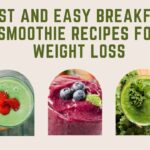Let’s get one thing straight—blogging is far from dead. It’s just not what it used to be, and that’s actually a good thing. Think of blogging as a chameleon—it changes colors depending on its environment. What once started as an online diary or a personal outlet for thoughts has now morphed into a strategic, business-savvy, and content-driven machine that fuels digital marketing, personal branding, and global conversations. So no, blogging hasn’t vanished; it’s grown up.
You see, blogging in 2025 isn’t about writing daily ramblings or journaling your cat’s adventures. Today’s blogging world is about adding value, solving problems, and providing insight. Whether it’s long-form thought leadership pieces, niche how-to guides, or monetized affiliate blogs, the format has shifted to meet the demands of modern readers. Blogs are now essential tools in the digital marketing toolkit—more professional, data-driven, and intentional than ever before.
blogging isn’t dead it’s just evolved
Still, many people equate the decline in casual blogging with blogging being “dead.” That’s a misunderstanding. People still crave in-depth content. They’re just consuming it in different ways and expecting more. Better design, clearer structure, multimedia integration, and SEO-optimized content are the new norms. Blogging isn’t on life support—it’s just evolving to stay relevant in a fast-changing digital world.
The Evolution of Blogging Over the Years
The Early 2000s: Personal Journals and Online Diaries
Back in the early 2000s, blogging was like writing in your diary—only this time, the whole internet could see it. Platforms like LiveJournal and Blogger made it simple to share your thoughts, feelings, and life updates with friends or complete strangers. It was raw, personal, and refreshingly unfiltered. These early blogs didn’t worry about SEO or monetization. They were about connection and community.
The content was often quirky and chaotic. A post might talk about what someone had for lunch, rant about school, or share song lyrics they loved. And people loved it. Blogs built niche communities around interests that mainstream media didn’t cover. Whether it was fan fiction, fashion, or tech, early bloggers found their tribes.
But while it was a golden age of expression, it lacked strategy. These blogs weren’t optimized or promoted with analytics in mind. They lived in isolated corners of the internet. As the web matured, so did blogging.
Mid-2000s to 2010: Rise of Niche Blogging and Monetization
As the mid-2000s rolled in, something shifted. Blogging became more niche and structured. Bloggers started realizing that their posts could attract thousands—even millions—of readers. Platforms like WordPress began to dominate, offering more professional-looking layouts and customization. Suddenly, bloggers could turn their hobbies into careers.
Niche blogs exploded—mom blogs, travel blogs, food blogs, tech blogs. These weren’t just about sharing personal stories; they delivered value-packed content that resonated with specific audiences. This era also marked the birth of monetization in blogging. Google AdSense, affiliate marketing, and sponsored content became new revenue streams. Suddenly, blogging wasn’t just fun—it was profitable.
Some bloggers transitioned into full-time creators, landing book deals or brand partnerships. Others built online courses and digital products. The blog became a central hub of their personal brand. This phase was when blogging really began to mature into a serious digital asset.
Read More:-
- ChatGPT Sora AI Video and Image Generator is now FREE to use In 2025
- From Blog Failure to Email Success: How One Creator Built an $8,000 Per Month Business With Just 700 Newsletter Subscribers—Without Relying on SEO or Social Media in 2025
2010s: Content Saturation and SEO Dominance
By the 2010s, blogs were everywhere. Every brand, every business, every creator wanted a slice of the blogging pie. While this boom brought innovation, it also led to content saturation. With so much noise, the competition for attention skyrocketed. That’s when SEO started taking center stage.
Blogging became less about sharing and more about ranking. Writers began researching keywords, optimizing headlines, and crafting pillar content to climb up the Google search results. Tools like Yoast SEO, SEMrush, and Ahrefs became must-haves in every blogger’s toolkit.
This era also saw the rise of content marketing as a strategy. Brands used blogs not only to educate but also to convert readers into customers. Blogging became less of a hobby and more of a calculated business move. If your blog wasn’t optimized, it got buried. And while some missed the casual charm of early blogging, the new model was here to stay—and make money.
Why People Think Blogging Is Dead
The Rise of Social Media Platforms
Let’s face it—when platforms like Facebook, Instagram, and TikTok took off, blogging took a hit. Why spend hours crafting a 1,000-word post when you could drop a 15-second video and get millions of views? Social media changed how we consume content. It’s quick, it’s visual, and it’s addictive.
Because of this, many started declaring blogging dead. After all, who reads long articles anymore, right? But that’s a shallow take. While social media thrives on instant gratification, it often lacks depth. Blogs fill that gap. When people want quick laughs, they go to TikTok. But when they want detailed answers or in-depth stories, they still turn to blogs.
Social media is great for discovery, but blogs are where the real conversations happen. Think of social platforms as billboards and blogs as full-length documentaries. Both have their place, but they serve different purposes.
How Blogging Has Evolved with Digital Trends
From Written Posts to Multimedia Experiences
Gone are the days when blogging was just blocks of text. Today’s readers expect an experience. That means your blog needs more than just words—it needs videos, infographics, GIFs, podcast embeds, and interactive elements. The modern blog post is a multimedia hub that serves different types of learners and readers.
Think about it: not everyone wants to read a 2,000-word article. Some prefer to skim bullet points, others enjoy watching a summary video, and some might want to listen to your content while commuting. Smart bloggers now format content to cater to these varying preferences.
By embedding YouTube videos, adding charts or visual data, or even using animations, blogs become far more engaging. It’s not about throwing random media into your posts—it’s about enhancing your message and keeping readers engaged for longer. In fact, pages with rich multimedia often rank higher in Google due to longer session times and lower bounce rates.
Blogs are evolving into digital storytelling platforms, not just publishing platforms. The written word is still powerful—but when paired with visual and audio enhancements? Unstoppable.
Integration with Email Marketing and Newsletters
In 2025, if your blog isn’t tied to an email strategy, you’re missing out on serious potential. Email is one of the most effective tools for building long-term relationships with your audience. That’s why modern blogging integrates directly with newsletters, lead magnets, and subscriber funnels.
Here’s how it works: someone lands on your blog, finds your content valuable, and signs up for your newsletter. That’s the beginning of a relationship. Through consistent emails, you keep them engaged, drive them back to your site, and nurture them toward whatever goal you have—whether it’s buying a product, reading a new post, or sharing your content.
Tools like ConvertKit, MailerLite, and Substack make this incredibly easy. You can embed opt-in forms within blog posts, offer freebies (like eBooks or checklists), and segment your audience based on interests. Bloggers who understand this are building communities, not just audiences.
Plus, newsletters help bypass algorithm changes on social platforms or Google. You’re not renting an audience—you’re owning it. And that makes a massive difference in long-term blog sustainability.
SEO and Content Strategy Become King
If you’re not strategic about SEO in today’s blogging world, you’re practically invisible. Search Engine Optimization isn’t just about inserting keywords anymore—it’s about building authority, solving problems, and aligning with search intent.
In the early days, bloggers could stuff a few keywords into a post and get ranked. Now, Google’s algorithms are smarter. They prioritize quality, user experience, and E-E-A-T (Experience, Expertise, Authoritativeness, Trustworthiness). That means your content has to be deep, insightful, and helpful.
Modern bloggers focus on content clusters, where multiple related posts link to a central “pillar” article. This helps establish topical authority and improves site structure. Internal linking, schema markup, and mobile optimization are all part of the game.
But SEO isn’t just for Google—it’s for readers too. Good SEO means your content is easier to read, better organized, and more aligned with what people actually want. So no, SEO didn’t kill creativity in blogging. It just gave it structure and purpose.
Blogging in the Age of Influencers
Personal Branding Through Blog Platforms
Influencer culture is massive—and blogging plays a huge role in building that influence. While social media offers reach, blogs provide depth. Influencers use blogs to share detailed reviews, personal stories, behind-the-scenes content, and more—things that don’t always fit into a 60-second reel.
A well-maintained blog acts as your digital home. It’s where people can explore your journey, understand your values, and see your expertise laid out in full. Unlike social media, where content disappears into the algorithm abyss, blog posts have staying power. They get indexed, shared, and revisited over time.
Personal branding isn’t just about being famous—it’s about being known for something. Your blog lets you control that narrative. Whether you’re a fashion blogger, wellness coach, or business consultant, your blog showcases your voice, your knowledge, and your unique perspective.
And let’s be real—brands still take blogs seriously. When deciding on partnerships or sponsorships, a blog adds professionalism and substance to your media kit. It shows you’re in it for the long haul, not just chasing viral trends.
Authenticity and Thought Leadership Over Virality
Virality is fun—but authenticity is what builds trust. And in today’s digital landscape, trust is everything. Blogs give creators the space to be real, to go deep, and to provide value beyond surface-level content.
While TikTok might make you famous overnight, a blog makes you credible. Thought leadership isn’t built in short videos—it’s earned over time through consistent, high-quality content that teaches, inspires, or challenges conventional thinking. People follow viral creators, but they trust thought leaders.
Blogging allows you to explore your ideas without the limitations of character counts or video trends. It’s where you can share data, link to sources, express nuanced opinions, and engage in meaningful discussions. That’s where true influence is born.
Moreover, long-form content can be repurposed into many other forms—tweets, videos, carousels, newsletters, and more. It all starts with a strong blog post. So while others chase trends, the smart creators are building evergreen influence—one blog at a time.
The Rise of Microblogging and Content Repurposing
Using Platforms Like Twitter, LinkedIn, and Instagram
Microblogging has exploded in popularity. Twitter (or X), LinkedIn, and even Instagram captions have become platforms for condensed blog-like content. These bite-sized pieces offer quick hits of value and are incredibly shareable.
But here’s the catch: they often stem from longer blog posts. Smart bloggers write a full article, then break it down into micro content that fits each platform. One blog post can turn into a LinkedIn carousel, a Twitter thread, a quote post on Instagram, and a short video script.
This multi-platform strategy keeps your message consistent while expanding your reach. You meet people where they are—some prefer reading blogs, others love quick tweets. Microblogging doesn’t replace traditional blogging; it complements it.
Blogs provide the meat, microblogs deliver the snacks. Together, they form a powerful content ecosystem.
Repurposing Blog Content for Other Formats
Creating content from scratch every time is exhausting—and unnecessary. Repurposing is the secret weapon of successful bloggers. One well-researched blog post can fuel an entire week (or month) of content across multiple channels.
Here’s how it works:
-
Turn listicles into individual Instagram slides.
-
Convert blog stats into tweet threads.
-
Record a podcast episode discussing your blog topic.
-
Summarize key takeaways in a YouTube video.
-
Email the highlights to your newsletter list.
Repurposing isn’t lazy—it’s strategic. It ensures your message gets more mileage and reaches a broader audience. Plus, it reinforces your authority on the topic. People learn through repetition, so the more they hear your ideas in different formats, the more they remember—and trust—you.
In today’s world, content that sits in one place goes stale. Repurposed content keeps your blog fresh, relevant, and evergreen.
Blogs as the Foundation of Content Marketing
Business Blogging for Lead Generation
In the digital marketing playbook, blogging isn’t just content—it’s currency. For businesses, blogs are one of the most reliable tools for attracting, nurturing, and converting leads. Think of a blog as your 24/7 salesperson. It doesn’t sleep, it doesn’t take holidays, and it works even when you’re not around.
Business blogs educate potential customers, build trust, and subtly guide them through the sales funnel. Someone searching “how to choose the best CRM software” might land on your blog. If your post is informative, engaging, and well-optimized, they might stick around, download a free guide, sign up for your email list, or even book a demo.
This is inbound marketing at its finest. Rather than cold-calling or running pushy ads, you’re drawing people in with value. It’s non-invasive and built around helping—not selling. And the best part? It’s scalable. One blog post can attract thousands of views over time, continuously bringing in leads without ongoing effort.
The smartest companies invest heavily in blog content. Why? Because they know it pays dividends—both in traffic and in trust.
Evergreen Content That Drives Traffic for Years
While trending topics can give you short bursts of attention, evergreen content is the long game. These are blog posts that remain relevant for months—or even years—after they’re published. Think “how-to” guides, tutorials, checklists, or deep-dive informational articles.
Evergreen content is the SEO goldmine. Once it ranks on Google, it can bring in consistent traffic without constant updates or promotion. Sure, you might need to refresh it occasionally to keep it accurate, but the heavy lifting is done up front.
Examples of evergreen topics include:
-
“How to Start a Blog in 2025”
-
“10 Email Marketing Tips That Actually Work”
-
“The Ultimate Guide to Freelance Writing”
This type of content is also perfect for internal linking, repurposing, and including in automated email sequences. It’s the gift that keeps on giving. Bloggers who prioritize evergreen posts build a strong content foundation that supports all their other digital efforts.
If you want a blog that lasts, don’t chase every new trend. Focus on value that stands the test of time.
The SEO Advantage: Why Blogs Still Matter
Search Engine Visibility and Organic Traffic
Let’s be clear—Google still loves blogs. Despite the rise of AI-generated content and visual media, well-optimized blog posts remain one of the top drivers of organic search traffic. Why? Because when someone types a question into Google, they’re often looking for a detailed answer—and blog posts are perfect for that.
Unlike social media posts that disappear within hours, blog content is searchable and indexable. A great article can rank on page one of Google and stay there for years, pulling in thousands of monthly visitors without any paid ads.
SEO-driven blogs are like planting seeds. At first, they take time to grow. But with the right strategy—targeting the right keywords, solving the right problems, and providing value—you’ll eventually see traffic bloom. And once it does, it doesn’t stop.
Plus, search intent is high-quality traffic. People who find your blog through a search engine are often actively looking for answers or solutions. That makes them far more likely to engage, subscribe, or convert.
Forget the “blogs are dead” talk—Google disagrees.
Long-Tail Keywords and Authority Building
While broad keywords like “blogging” are incredibly competitive, long-tail keywords are where the real opportunity lies. These are specific phrases like “how to start a food blog for beginners” or “best SEO tools for small businesses.” They have lower search volume but higher conversion potential.
Long-tail keywords allow smaller blogs to compete with the big dogs. By targeting specific queries, you position yourself as an expert in niche areas. Over time, consistently ranking for these terms builds domain authority and increases your chances of ranking for more competitive phrases.
Also, authority isn’t just about Google—it’s about your audience. When people read in-depth, focused content that speaks directly to their needs, they begin to trust you. That trust translates into engagement, loyalty, and ultimately, conversions.
Blogging isn’t about writing everything—it’s about writing the right things. Long-tail SEO helps you do that.
Blogs vs Vlogs vs Podcasts: Which Wins?
Pros and Cons of Each Medium
Let’s break it down. Blogs, vlogs, and podcasts all have their strengths—but they serve different purposes.
Blogs are ideal for:
-
Search engine traffic
-
In-depth, skimmable content
-
Link building and citations
-
Quiet, self-paced consumption
Vlogs excel at:
-
Personal connection and storytelling
-
Demonstrations and visual tutorials
-
Engaging younger, visual-first audiences
-
YouTube’s massive traffic potential
Podcasts shine when:
-
Audiences want hands-free learning (driving, working out)
-
Long-form conversations or interviews are ideal
-
Building emotional connection through voice
-
Reaching niche communities
So which one’s best? That depends on your audience and goals. But here’s the truth—blogging complements both. A blog can host your podcast transcripts, embed your videos, summarize key takeaways, and even act as a content hub for all your media.
Instead of choosing one, savvy creators integrate all three.
Why Blogging Still Holds Its Ground
Despite the flashiness of video and the intimacy of audio, blogging remains the backbone of content strategy. Why? Because it’s:
-
Searchable: Blogs show up on Google, YouTube descriptions don’t.
-
Shareable: Blog links are easy to copy, email, and reference.
-
Structured: With headings, bullet points, and tables, it’s easy to scan.
-
Flexible: You can edit a blog anytime. Try doing that with a podcast!
More importantly, blogs offer control. You own your website. You’re not at the mercy of TikTok’s algorithm or YouTube’s demonetization rules. Your blog is your home, your brand, and your business—rolled into one.
Blogging isn’t just surviving—it’s anchoring your entire digital presence.
Monetization Is Still Alive and Thriving
Affiliate Marketing, Sponsored Content, and More
Let’s talk money—because blogging can still bring in serious income if done right. The idea that monetization through blogs is “dead” couldn’t be further from the truth. In fact, bloggers today have more revenue streams than ever before.
Affiliate marketing remains one of the most powerful ways to make passive income. By recommending products or services with affiliate links, bloggers earn a commission when readers make purchases. The key? Promoting products you genuinely believe in and that are highly relevant to your niche.
Sponsored content is another major player. Brands are always looking for influencers and bloggers to create authentic posts that integrate their products naturally. These partnerships can be one-off campaigns or long-term collaborations—either way, it’s a lucrative gig if your blog has an engaged audience.
Other monetization methods include:
-
Display ads (through platforms like Mediavine or Ezoic)
-
Creating and selling eBooks, courses, or digital templates
-
Offering coaching or consulting services
-
Running membership sites or gated content areas
Monetizing a blog in 2025 is about being strategic, building trust, and diversifying income. And yes—it still works beautifully.
Creating and Selling Digital Products
One of the best ways to scale your blog income? Sell your own stuff. Digital products are incredibly popular among bloggers because they’re low-cost to create, infinitely scalable, and highly profitable.
Some popular digital product ideas include:
-
Online courses
-
Printables (planners, worksheets, checklists)
-
eBooks
-
Paid webinars or workshops
-
Private communities or masterminds
Your blog becomes the perfect sales funnel. You attract readers through SEO, capture leads via email opt-ins, and nurture them with content until they’re ready to buy. Done right, it’s a seamless and automated system.
And the best part? You keep 100% of the profits (no middlemen, no affiliate splits). With platforms like Gumroad, Podia, or Teachable, creating and delivering digital products is easier than ever.
So yes, blogging still pays—but now it’s about selling your knowledge, not just someone else’s.
Blogging Platforms That Still Rock in 2025
WordPress, Ghost, Substack, and Medium
The platform you choose matters—it’s your blog’s foundation. And in 2025, we’ve got some heavy hitters still going strong.
WordPress (still the king) powers over 40% of the web. It’s endlessly customizable, SEO-friendly, and backed by a massive developer community. If you’re serious about long-term blogging and want full control, WordPress is unbeatable.
Ghost is a sleek, minimalist option perfect for creators who want speed, simplicity, and modern design. It’s especially popular among tech-savvy writers and those running paid membership blogs.
Substack has emerged as the darling of independent writers. It blends blogging with newsletters, letting you build a direct relationship with readers and monetize via paid subscriptions. Great for personal brands and niche thought leaders.
Medium, while not as hot as it once was, still offers solid exposure if you’re writing high-quality, opinion-based content. Just know you don’t fully own your audience there—it’s more for reach than control.
Each platform has its pros and cons. The best one for you depends on your goals, tech skills, and content strategy.
Which Platform Is Best for Your Goals?
Let’s make it simple:
-
Want full control and flexibility? Go with WordPress.
-
Want fast publishing with a sleek feel? Try Ghost.
-
Want to build an audience through email? Substack is your jam.
-
Want to write without the hassle of setup? Medium works.
Whatever you choose, make sure it aligns with your content goals, monetization plan, and audience preferences. Your platform should support your blog—not hold it back.
How to Start a Successful Blog Today
Picking a Niche and Audience
The first rule of blogging in 2025: don’t write for everyone. Write for someone. The riches are in the niches. Whether it’s personal finance for millennials, vegan recipes for busy moms, or mental health tips for Gen Z—specificity wins.
Your niche should meet three criteria:
-
You’re passionate about it.
-
Others are interested in it.
-
It has monetization potential.
Once you’ve picked your niche, get crystal clear on your audience. Who are they? What problems do they face? What do they search for? The better you know your readers, the more effectively you can serve them.
And don’t just guess—use keyword tools, forums, and social media to validate demand before you dive in.
Crafting Quality Content Consistently
Consistency beats perfection every time. You don’t need to publish daily, but you do need a reliable rhythm. Whether it’s once a week or biweekly, stick to your schedule and deliver value each time.
Great blog content is:
-
Reader-focused
-
SEO-optimized
-
Easy to read (short paragraphs, headings, visuals)
-
Actionable and helpful
Before hitting publish, ask: Would I share this? Would I bookmark this? If not, keep refining. Quality always beats quantity—but quantity helps you build authority over time.
And don’t forget promotion. Publishing is just step one. Share it on social, email it to your list, and repurpose it everywhere.
Common Mistakes Modern Bloggers Make
Writing for Themselves Instead of Their Audience
This is the silent killer of most blogs. Too many writers focus on what they want to say instead of what their readers need to hear. Your blog isn’t your diary—it’s a solution machine.
Before writing any post, ask:
-
What question am I answering?
-
What problem am I solving?
-
What value does this provide?
The more you align with your audience’s goals, the faster your blog will grow.
Neglecting SEO and Content Planning
You can write the best article in the world, but if no one finds it, what’s the point? Ignoring SEO is like opening a shop with no sign. Modern blogging needs smart keyword targeting, on-page optimization, and content calendars that guide your growth.
Use tools like:
-
Ahrefs or Ubersuggest for keyword research
-
Yoast or RankMath for on-site SEO
-
Trello or Notion for content planning
Success doesn’t come from random posting—it comes from strategic publishing.
Blogging and Community Building
Creating Loyal Audiences Through Value
Your blog isn’t just a website—it’s a community. When readers feel understood, informed, and appreciated, they return. They comment. They share. They buy. Building that loyalty takes more than great content—it takes connection.
Respond to comments. Engage in newsletters. Ask for feedback. Make readers feel like they matter—because they do.
Loyalty turns one-time visitors into lifelong fans.
Engaging Readers Through Comments and Social Sharing
Encourage discussion. End posts with questions. Highlight community contributions. When people feel part of something, they stick around. And when they stick around, your blog thrives.
Also, make it easy to share. Include social buttons, tweetable quotes, and email snippets. Amplify your reach through your readers.
Your blog is the fire. Your readers are the fuel.
Real-Life Case Studies of Modern Blogging Success
Bloggers Who Pivoted and Thrived
Plenty of bloggers have adapted to changing times and crushed it. Like:
-
A mommy blogger who launched a 6-figure online course brand.
-
A personal finance writer who turned his blog into a YouTube-podcast hybrid empire.
-
A food blogger who used SEO to land a book deal and TV appearances.
Their secret? Flexibility. Strategy. Consistency.
How Brands Use Blogs to Connect and Convert
Big brands like HubSpot, Canva, and Shopify invest heavily in blogs. Why? Because they work. Their content educates users, attracts search traffic, and builds trust—all at scale.
If billion-dollar companies blog, you should too.
Final Thoughts: The Future of Blogging
Adaptability and Strategy in the New Age
Blogging isn’t what it was—but that’s not a bad thing. It’s evolved. It’s smarter, sharper, and more strategic. The blogs that thrive today are run like businesses—with goals, analytics, and systems.
Adapt or get left behind. Blogging isn’t about nostalgia—it’s about impact.
Why It’s Not Dead—Just Different
People still crave stories, solutions, and substance. Blogging is just the medium they trust to deliver that—if it’s done right.
So no, blogging isn’t dead. It’s just evolved. And for those who evolve with it, the opportunities are bigger than ever.
FAQs
1. Can you still make money blogging in 2025?
Absolutely. With affiliate marketing, digital products, sponsorships, and more, blogging remains a powerful income stream.
2. Is it too late to start a blog now?
Nope. The best time was yesterday. The second-best time is now. Start smart and stay consistent.
3. What’s the best blogging platform for beginners?
WordPress is the most flexible. But if you want simplicity, Substack or Medium might be easier to start with.
4. How long should a blog post be in 2025?
Aim for 1,500+ words for SEO, but always prioritize value over word count.
5. Should I focus on social media or blogging?
Both. Use social to drive traffic to your blog. Your blog is your home base—social is your marketing channel.










